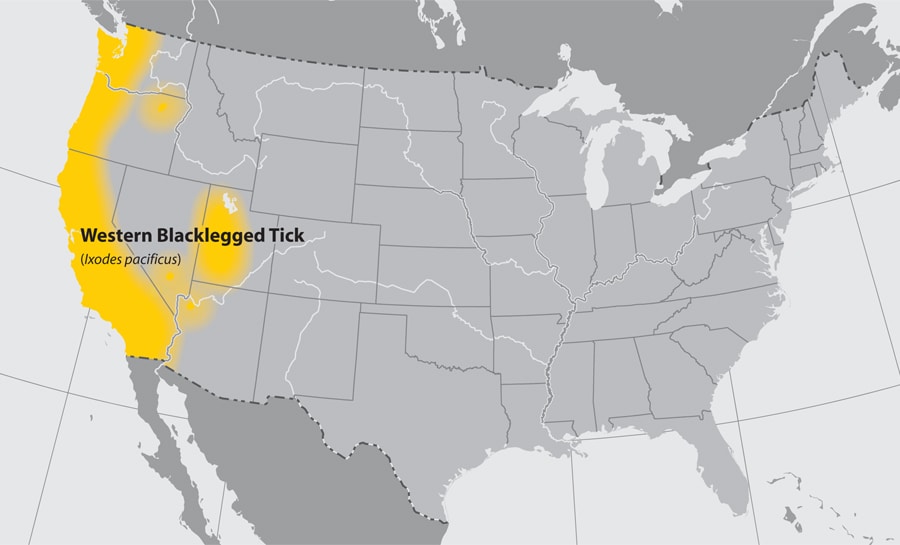Archive for the ‘Tick-borne diseases’ Category
At a crossroads for Lyme and other serious tick-borne diseases in the U.S.
Wednesday, August 21st, 2019“…….In 2017, mosquito-borne West Nile virus, which currently infects about 2,000 people annually in the U.S. received $42 million in support from the U.S. National Institutes of Health. Lyme disease, with 20 times the number of reported cases, got half as much, a figure that has changed little in a decade. ……..Lyme disease from black-legged ticks is only a part of the problem. Cases of anaplasmosis and ehrlichiosis have soared, increasing sixfold since 2004. Malaria-like babesiosis, once limited to coastal islands, has been reported in 27 states; it makes Lyme disease far worse. The lone star tick, common in the South, has migrated to vast tracts of new territory as the climate has warmed, its bite causing a potentially severe meat allergy unheard of a decade ago. In 2017 the Asian longhorned tick became the first new tick species in the U.S. in 80 years. Now in 11 states, the ticks so infested five cows in North Carolina recently that they died of anemia from blood loss. The implications for agriculture could be dire because female longhorned ticks can clone themselves, vastly increasing birthrates. …..”
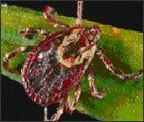
Where found: Widely distributed east of the Rocky Mountains. Also occurs in limited areas on the Pacific Coast.
Transmits: Tularemia and Rocky Mountain spotted fever.
Comments: The highest risk of being bitten occurs during spring and summer. Dog ticks are sometimes called wood ticks. Adult females are most likely to bite humans.

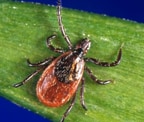
Where found: Widely distributed across the eastern United States.
Transmits: Borrelia burgdorferi and B. mayonii (which cause Lyme disease), Anaplasma phagocytophilum (anaplasmosis), B. miyamotoi disease (a form of relapsing fever), Ehrlichia muris eauclairensis (ehrlichiosis), Babesia microti (babesiosis), and Powassan virus (Powassan virus disease).
Comments: The greatest risk of being bitten exists in the spring, summer, and fall. However, adults may be out searching for a host any time winter temperatures are above freezing. Stages most likely to bite humans are nymphs and adult females.
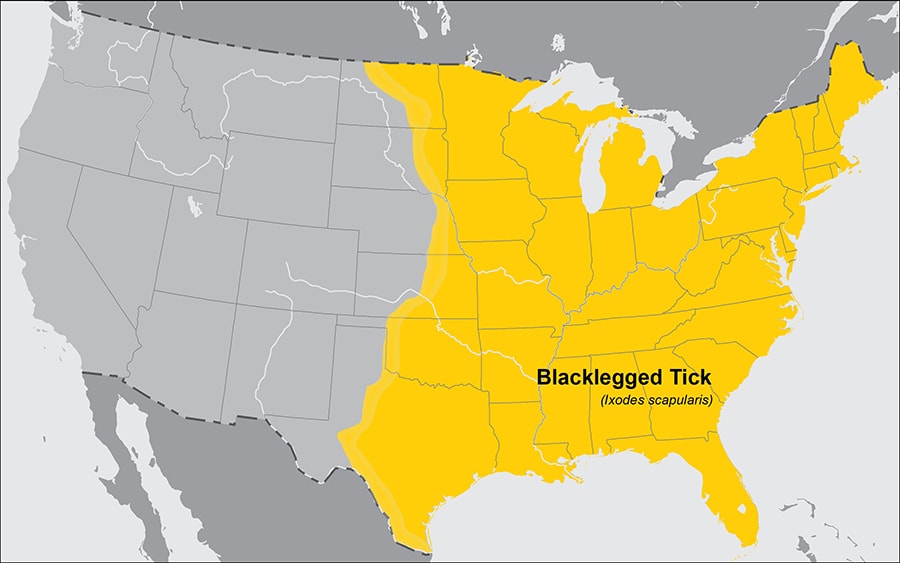
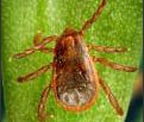 Where found: Worldwide.
Where found: Worldwide.
Transmits: Rocky Mountain spotted fever (in the southwestern U.S. and along the U.S.-Mexico border).
Comments: Dogs are the primary host for the brown dog tick in each of its life stages, but the tick may also bite humans or other mammals.
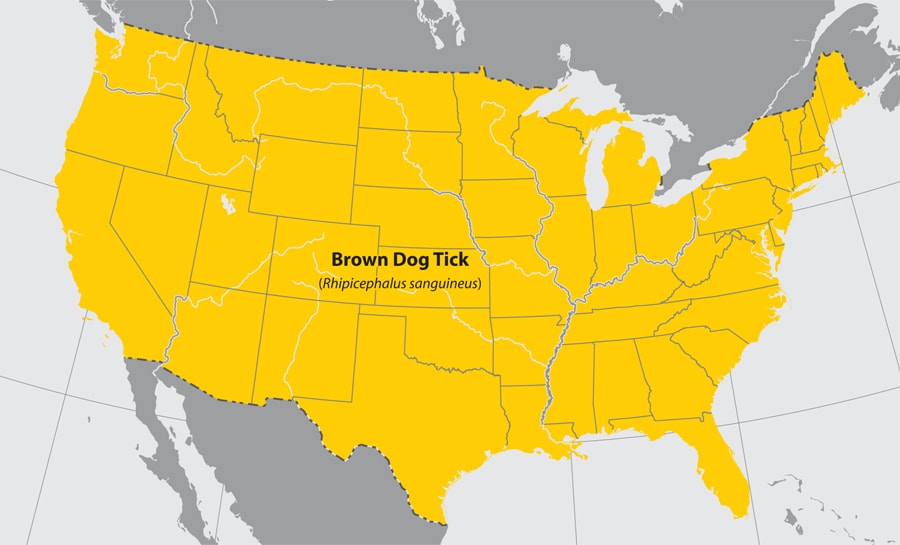
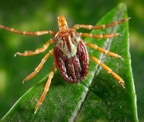
Where found: Coastal areas of the U.S. along the Atlantic coast and the Gulf of Mexico.
Transmits: Rickettsia parkeri rickettsiosis, a form of spotted fever.
Comments: Larvae and nymphs feed on birds and small rodents, while adult ticks feed on deer and other wildlife. Adult ticks have been associated with transmission of R. parkeri to humans.
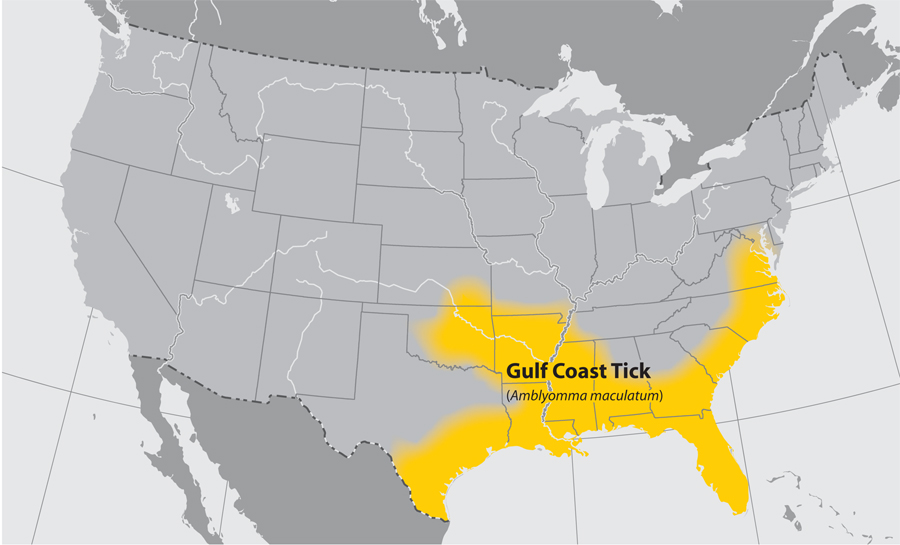
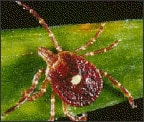
Where found: Widely distributed in the southeastern and eastern United States.
Transmits: Ehrlichia chaffeensis and Ehrlichia ewingii (which cause human ehrlichiosis), Heartland virus, tularemia, and STARI.
Comments: A very aggressive tick that bites humans. The adult female is distinguished by a white dot or “lone star” on her back. Lone star tick saliva can be irritating; redness and discomfort at a bite site does not necessarily indicate an infection. The nymph and adult females most frequently bite humans and transmit disease.
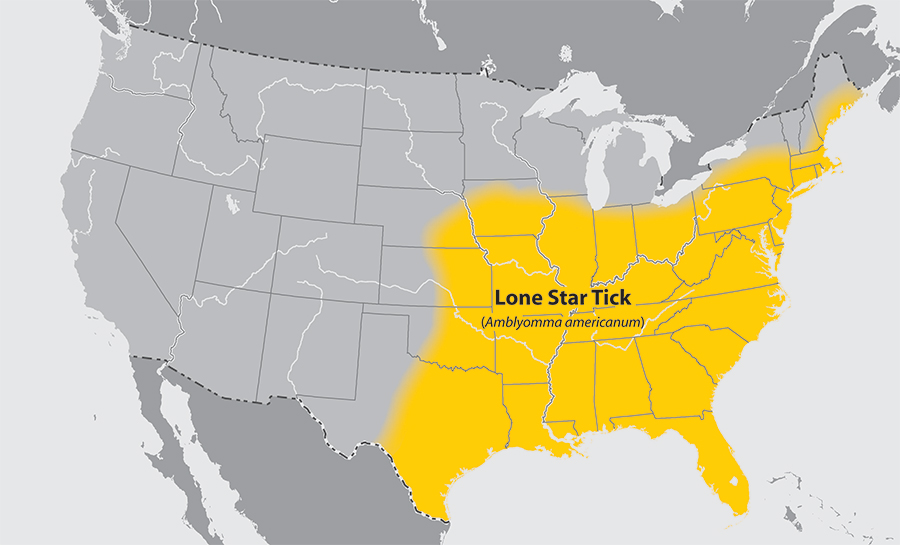
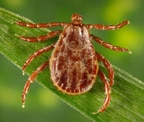 Where found: Rocky Mountain states and southwestern Canada from elevations of 4,000 to 10,500 feet.
Where found: Rocky Mountain states and southwestern Canada from elevations of 4,000 to 10,500 feet.
Transmits: Rocky Mountain spotted fever, Colorado tick fever, and tularemia.
Comments: Adult ticks feed primarily on large mammals. Larvae and nymphs feed on small rodents. Adult ticks are primarily associated with pathogen transmission to humans.
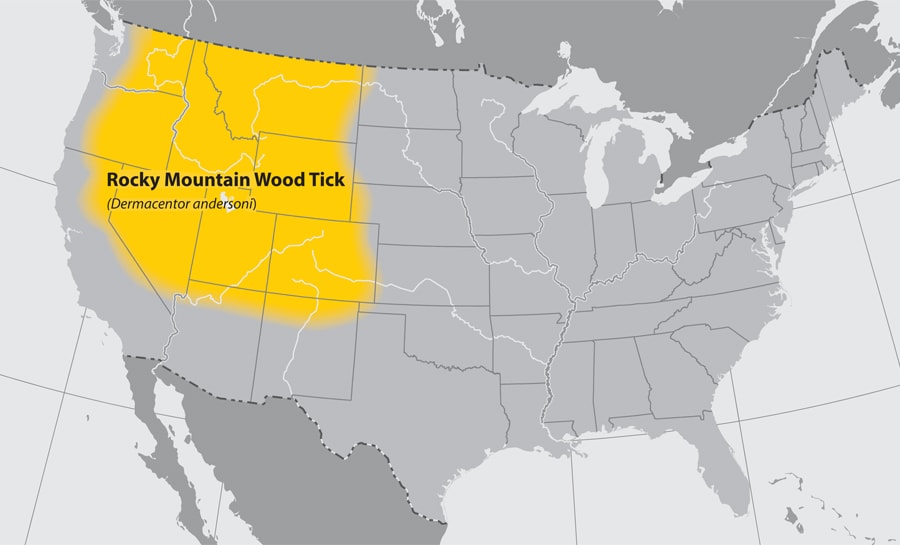
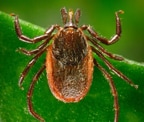 Where found: Along the Pacific coast of the U.S., particularly northern California.
Where found: Along the Pacific coast of the U.S., particularly northern California.
Transmits: Anaplasmosis and Lyme disease.
Comments: Nymphs often feed on lizards, as well as other small animals. As a result, rates of infection are usually low (~1%) in adults. Stages most likely to bite humans are nymphs and adult females.
